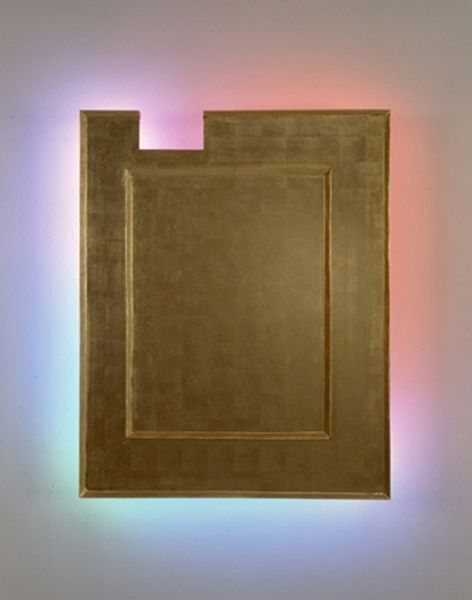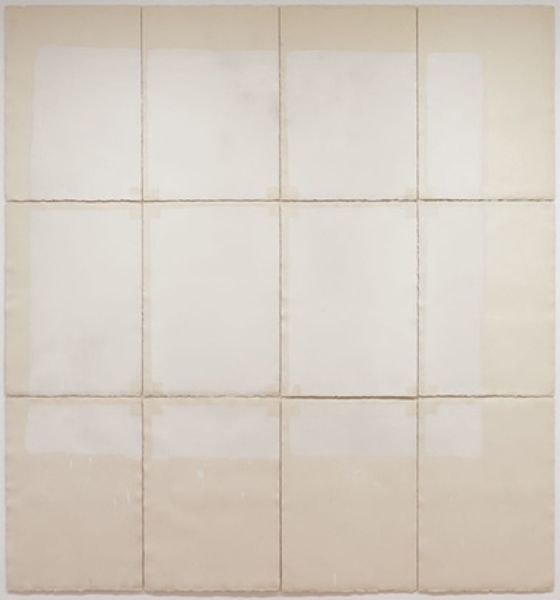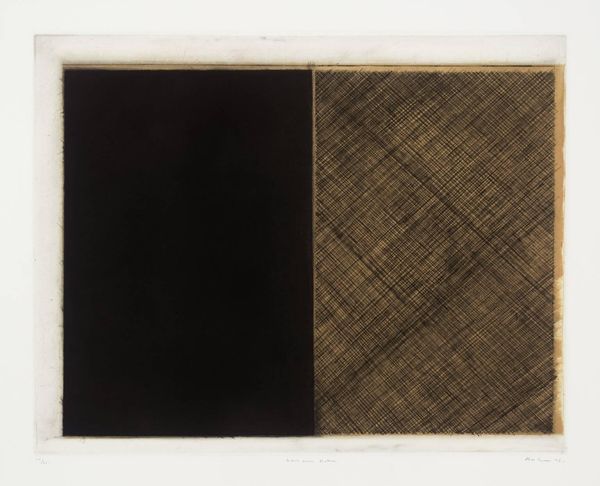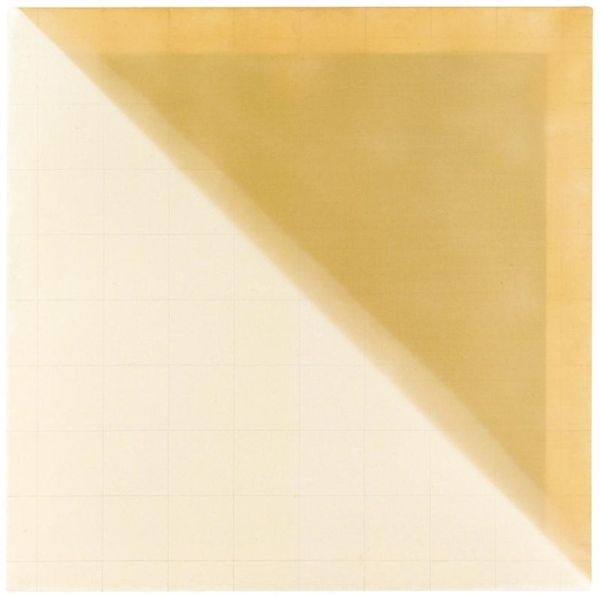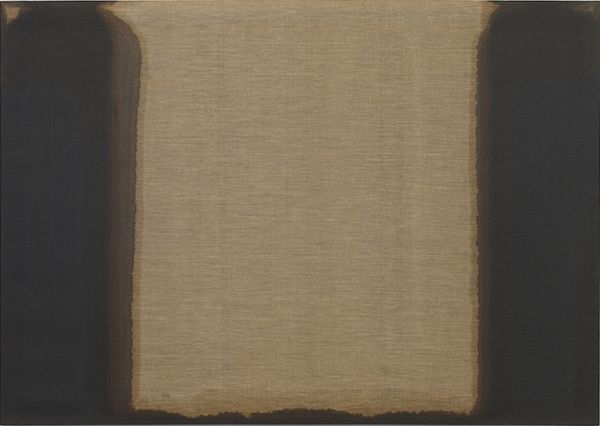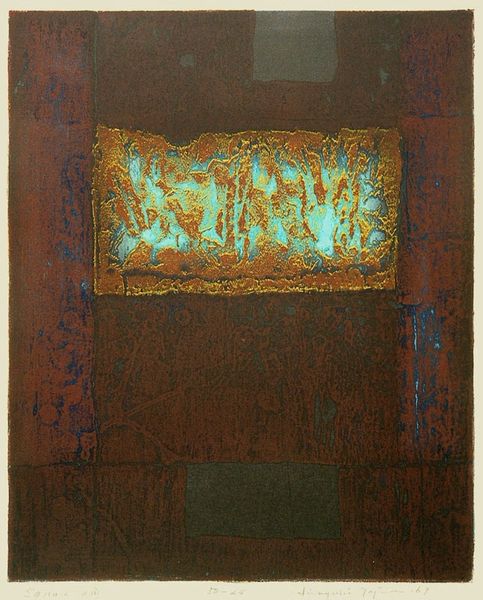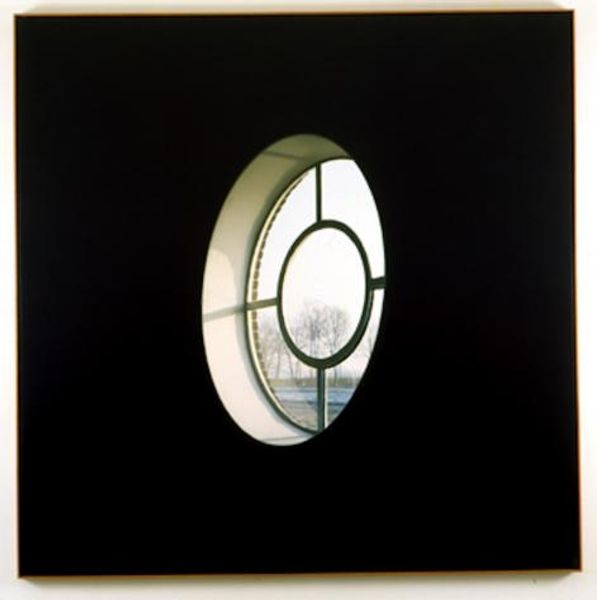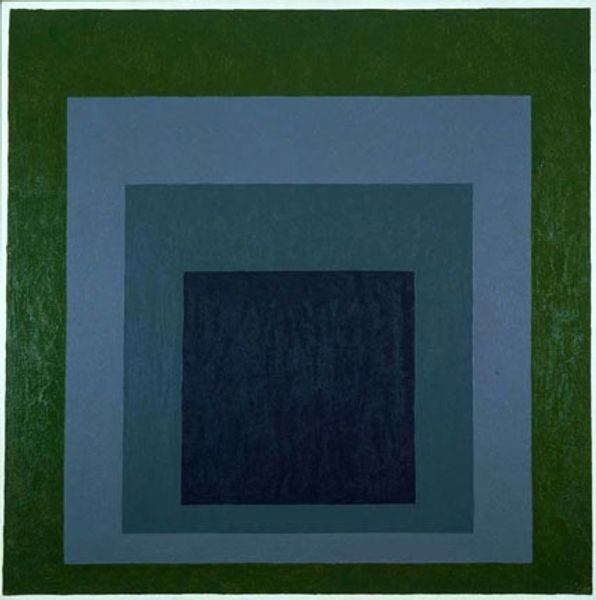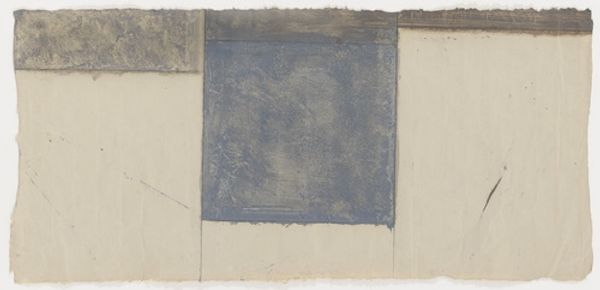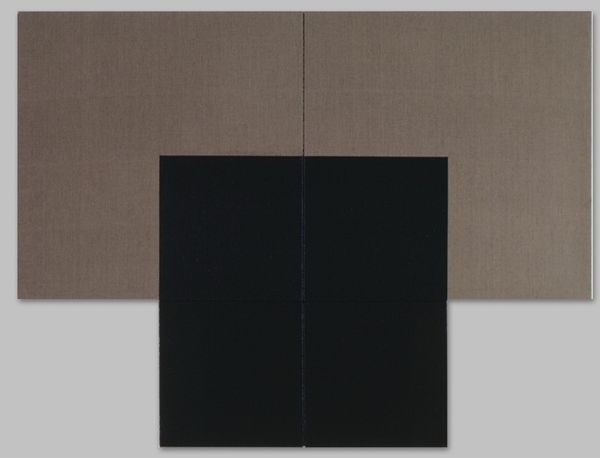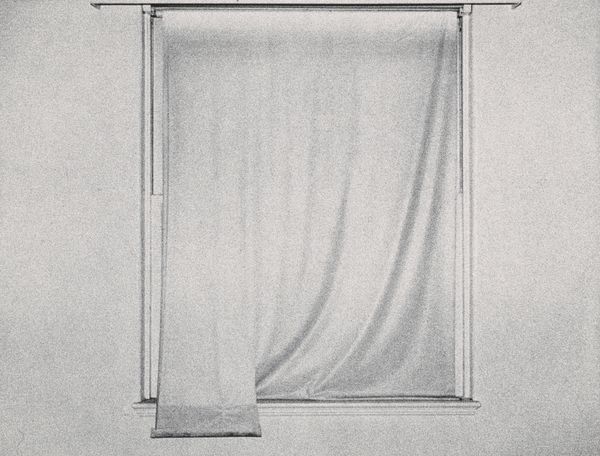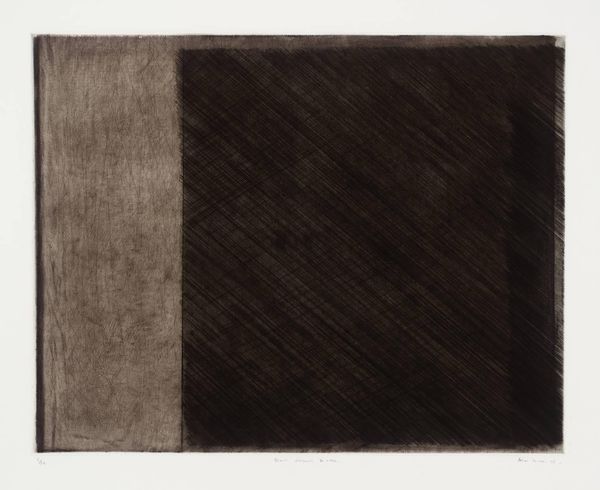
Copyright: Ron Cooper,Fair Use
Curator: Here we have Ron Cooper's "Light Trap 8210" from 1982, crafted using acrylic paint. What are your initial thoughts? Editor: Intriguing! There’s a palpable tension here, a somber quality to the darkening gradient offset by these structural, geometric divisions. Almost feels like peering into an overgrown, neglected greenhouse. Curator: Ron Cooper, known for his contributions to the Light and Space movement, consistently interrogated the physical properties of his materials, specifically exploring how light interacts with resin and pigment. I find it fascinating how he disrupts conventional painting through this investigation. Editor: Absolutely, it resonates with broader movements challenging artistic hierarchies by centering material agency. How the artist harnesses industrial processes, bringing them into conversation with artistic expression…what was the context of production during this period? Curator: By the early 80s, artists were pushing against the prevailing minimalist aesthetic, integrating the handmade within increasingly mechanized systems. Here, Cooper adopts acrylic paint as an exploration rather than a means of pictorial representation. Editor: It speaks to a critical period examining intersections of industry, ecology, and the post-industrial landscape. These stratified sections evoke not only modernist architectural planning, but also concerns around land usage and sustainable practices. It reminds me of urban decay and the environment at risk. Curator: Notice the slight imperfections along the edges. That delicate yet crucial tension emphasizes his departure from flawless industrial fabrication toward a richer understanding of manual techniques. Editor: Those very imperfections are incredibly compelling; a kind of vulnerable trace evidencing labor and revealing the constructed nature of the artifice. In highlighting production and social context, do you believe it moves away from formal abstraction? Curator: I see it more as an expanded definition. The material properties *are* the language. He emphasizes production methods as fundamental rather than extraneous. Editor: Which inevitably leads back to meaning-making…and a richer engagement with socio-political concerns. Thank you for pointing out the productive nature of tension within it. Curator: And thank you for framing the important issues beyond pure materiality and its artistic handling.
Comments
No comments
Be the first to comment and join the conversation on the ultimate creative platform.
